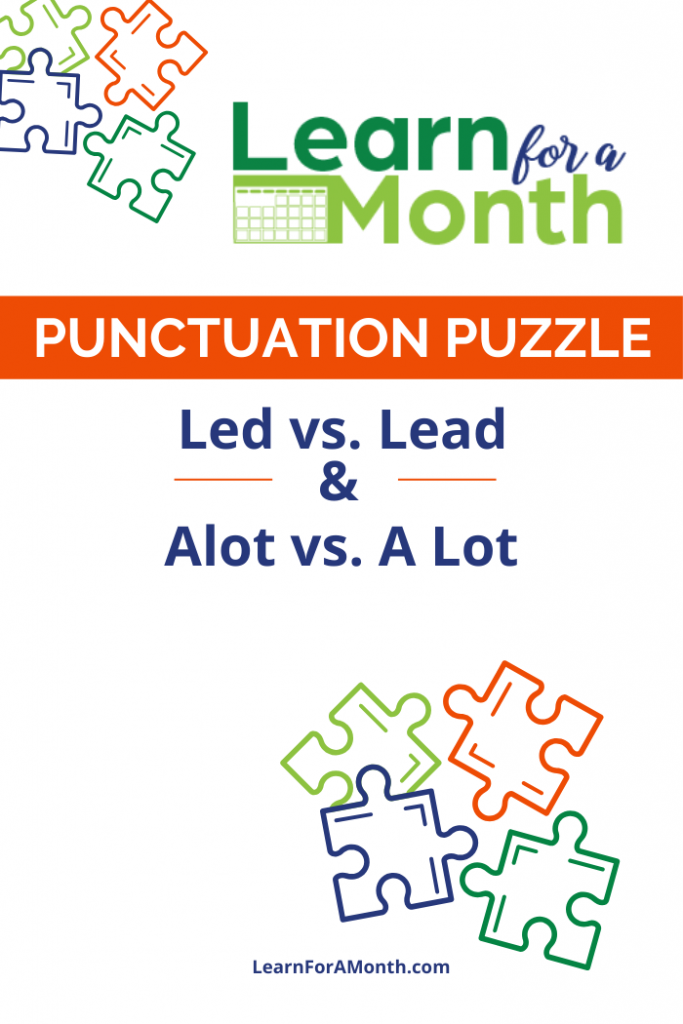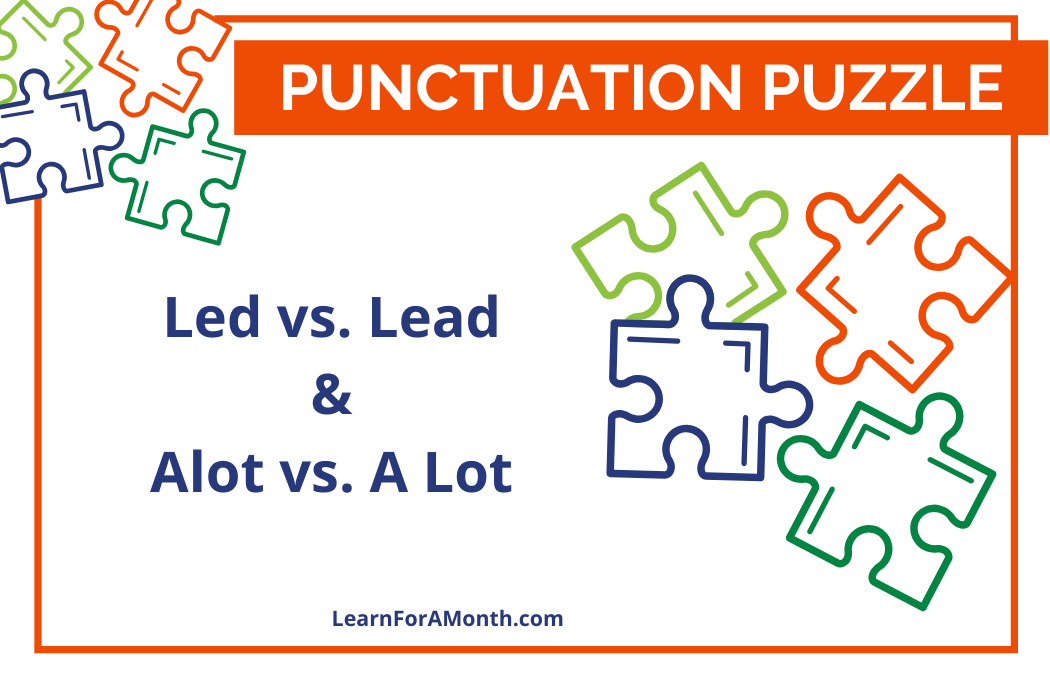By Zac Kieser and Donna Reish
Today we have a PUNCTUATION PUZZLE—plus a couple of other errors for you to find!
The shepherd lead them to the brook and they drank alot, because they were very, hot, and thirsty.
Here is the answer with an explanation for each aspect below:
The shepherd led them to the brook, and they drank a lot because they were very hot and thirsty.
LED vs LEAD: The shepherd LED them to the brook……
1. LEAD (pronounced ledd with as short e) is only pronounced ledd when it refers to a metal or pencil graphite.
2. Otherwise LEAD is pronounced leed (long e) and is the current tense of the verb lead (LEED).
3. LED is the past tense of the verb LEAD (pronounced LEED, with a long e).
CS ,cc CS–Do you remember these rules for compound sentences?
1. CS stands for complete sentence; cc stands for coordinating conjunction.
2. You can join one CS (complete sentence) with another CS by using a comma-cc (,For/ ,And/ ,Nor/ ,But/ ,Or/ ,Yet/ ,So).
3. You may not combine two complete sentences into one with a cc only–you must put a comma before it: The shepherd led them to the brook, AND they drank….
ALOT vs A LOT:
ALOT is not one word; it should be two words–A LOT—meaning a bunch or a large amount: The shepherd led them to the brook, and they drank a lot….
No comma before a subordinator at the end of a sentence unless it is a WHICH clause-
1. You do not need a comma before the BECAUSE.
2. You do not hear a pause (like you would if it were a WHICH clause): The shepherd led them to the brook, and they drank a lot because they were very hot and thirsty.
No Comma Between an adverb and the adjective it describes—
1. Or more clearly put, no comma between a qualifier and a describer: VERY hot and thirsty (not VERY, hot, and thirsty).
2. Very is an adverb telling how hot (an adverb describing an adjective or qualifying it).
3. Tip for this:
a. If you can put an AND where you are trying to put the comma, then a comma is needed (in place of the and): they were muddy, hot, and thirsty (muddy AND hot AND thirsty).
b. If you cannot put an AND, do not put a comma: very AND hot—NO!).
c. Also, do not use a comma when you have only two adjectives and you are placing an AND in between them–either use a comma (hot, thirsty) OR place an AND (hot and thirsty) but not both.

Today’s Punctuation Puzzle was written by Zac Kieser and Donna Reish.


Trackbacks/Pingbacks